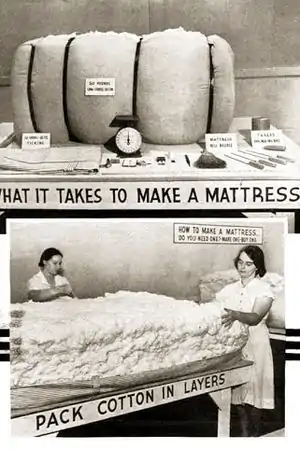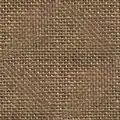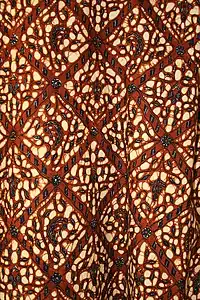Ticking
Ticking is a cotton or linen textile that is tightly woven for durability and to prevent down feathers from poking through the fabric,[1] and used to cover mattresses and bed pillows.[2] It commonly has a striped design, in muted colors such as brown, grey or blue, and occasionally red or yellow, against a plain, neutral background.


Although traditionally used for mattresses and pillows, the material has found other uses, such as serving as a backing for quilts, coverlets, and other bedding.[1] It is sometimes woven with a twill weave.
Ticking is no longer restricted to a utility fabric and has found uses in interior decorating styles intending to evoke a homespun or industrial aesthetic. Modern uses for ticking include furniture upholstery, cushion covers, tablecloths, decorative basket liners, and curtains. Occasionally, lighter weight percale cloth is printed with a striped pattern made to resemble ticking fabric, and used to make garments.
See also
References
- Shaeffer, Claire (2008). Claire Shaeffer's Fabric Sewing Guide. Krause Publications Craft. pp. 497. ISBN 9780896895362.
- Operath, Larry (2006). Textile. Lotus Press. p. 161. ISBN 9788189093624.


.svg.png.webp)